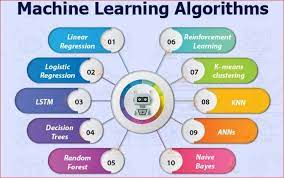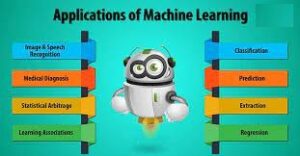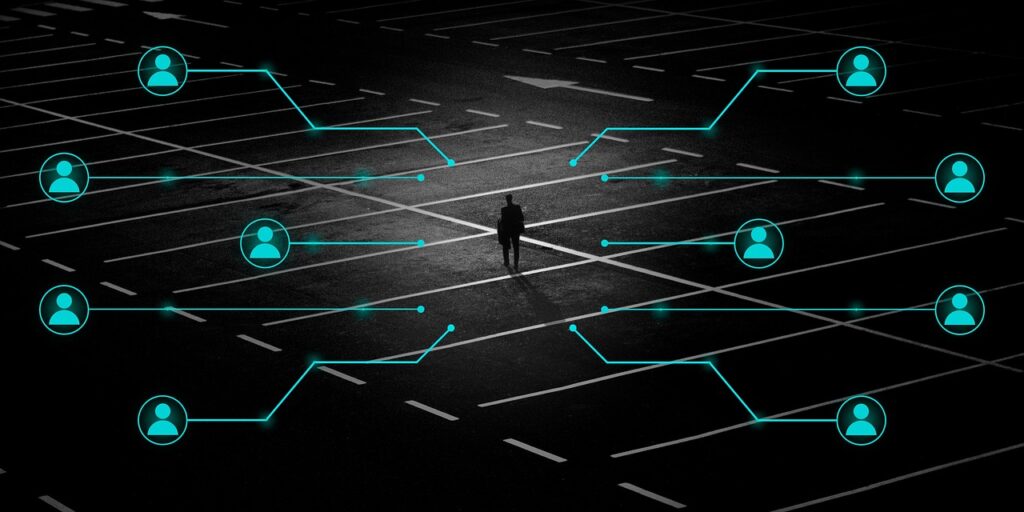Mastering Image Data in ML: Unleashing the Potential of ML for best Visual Analytics

Introduction to image data in machine learning
As we delve into the world of machine learning, we often encounter a multitude of data types, each presenting its own unique challenges and opportunities. Among these, image data in ML stands out as a rich and complex source of information that has the potential to revolutionize various fields, from healthcare to autonomous vehicles. Understanding the role and significance of image data in ML is crucial for harnessing its full potential and unlocking new possibilities in visual analysis.
The use of image data in ML has become in creasingly prevalent due to the growing availability of digital images and the advancements in computer vision technology. Images contain a wealth of visual information that can be utilized to make informed decisions and predictions in various domains. Whether it’s identifying objects in a photograph or diagnosing medical conditions from medical images, the ability to process and analyze image data has opened up new frontiers in machine learning.
The unique nature of image data in ML presents both challenges and opportunities for machine learning practitioners. Unlike structured data, such as numerical or categorical data, images are unstructured and high-dimensional, requiring specialized techniques and algorithms for effective analysis. Furthermore, the sheer volume of image data in ML can pose challenges in terms of storage, processing, and computational requirements. However, the rich visual information contained within images offers the potential for extracting valuable insights and patterns that may not be apparent in other forms of data.
Understanding the importance of image data in machine learning
The importance of image data in ML cannot be understated, as it plays a pivotal role in enabling machines to interpret and understand the visual world. From recognizing faces in photos to interpreting satellite imagery for environmental monitoring, image data fuels a wide range of applications that impact our daily lives. By leveraging the information embedded in images, machine learning models can be trained to perform tasks such as object detection, image classification, and image generation, opening up new possibilities for automation and decision-making.
One of the key reasons for the significance of image data in ML is its ability to capture rich and diverse information in a visual format. Unlike other types of data, images convey complex patterns, textures, and spatial relationships that are essential for tasks such as scene understanding, visual inspection, and pattern recognition. This visual richness enables machine learning models to learn from and make sense of the visual world, allowing them to perform tasks that were once exclusive to human perception.
Furthermore, the widespread availability of image data in various domains, such as medical imaging, satellite imagery, and surveillance footage, has fueled the demand for advanced machine learning techniques that can effectively process and analyze visual information. As a result, understanding and harnessing the importance of image data in ML has become a priority for researchers, practitioners, and organizations seeking to capitalize on the vast potential of visual data.
Challenges and opportunities in processing image data
Processing image data presents a unique set of challenges and opportunities for machine learning practitioners. While images offer a wealth of visual information, they also pose challenges in terms of data complexity, size, and variability. Understanding and addressing these challenges is essential for effectively working with image data and realizing its full potential in machine learning applications.
One of the primary challenges in processing image data is the high dimensionality and unstructured nature of images. Unlike structured data, such as tabular data, images consist of a large number of pixels, each containing color and spatial information. This high dimensionality can make traditional machine learning algorithms less effective and may require specialized techniques, such as feature extraction and dimensionality reduction, to make the data more manageable and informative.
Another challenge in processing image data is the variability and diversity of visual content. Images can depict a wide range of subjects, scenes, and perspectives, leading to variations in illumination, scale, orientation, and appearance. Addressing this variability requires robust preprocessing techniques and data augmentation strategies to ensure that machine learning models can generalize effectively across different image instances and conditions.
Despite these challenges, processing image data also presents opportunities for leveraging advanced machine learning algorithms, such as deep learning, to extract meaningful representations and patterns from visual data. Deep learning models, such as convolutional neural networks (CNNs), have demonstrated remarkable capabilities in image recognition, object detection, and image generation, paving the way for transformative applications in fields such as healthcare, robotics, and augmented reality.

Preprocessing techniques for image data in machine learning
Preprocessing image data is a critical step in preparing it for effective analysis and modeling in machine learning applications. By applying various preprocessing techniques, such as normalization, resizing, and augmentation, practitioners can enhance the quality and utility of image data, enabling machine learning models to learn and generalize more effectively from visual information.
One of the fundamental preprocessing techniques for image data in ML is normalization, which involves scaling the pixel values to a common range to ensure consistency and numerical stability during training. Normalization can help mitigate the effects of variations in illumination and contrast across different images, making the data more conducive to learning and generalization.
Resizing is another important preprocessing step for image data in ML, particularly when working with images of varying dimensions. Resizing images to a consistent size not only facilitates uniform input dimensions for machine learning models but also reduces computational overhead during training and inference. Additionally, resizing can help mitigate the impact of spatial variations in images, enabling models to focus on the semantic content rather than the specific layout or resolution of the images.
Data augmentation is a powerful preprocessing technique that involves applying transformations, such as rotation, flipping, and zooming, to generate variations of the original images. By augmenting the training data with diverse transformations, practitioners can enhance the robustness and generalization of machine learning models, enabling them to learn invariant representations and patterns from the augmented images. This can be particularly beneficial when working with limited training data or when aiming to improve the model’s resilience to variations in input images.
Popular machine learning algorithms for image data analysis
When it comes to analyzing image data in machine learning, a variety of algorithms and techniques have been developed to address the unique challenges and opportunities presented by visual information. From traditional machine learning algorithms to state-of-the-art deep learning models, each approach offers distinct advantages and considerations for processing and interpreting image data effectively.
One of the traditional machine learning algorithms commonly used for image data analysis is the Support Vector Machine (SVM). SVMs are well-suited for tasks such as image classification and object recognition, as they can effectively learn non-linear decision boundaries and handle high-dimensional feature spaces. By leveraging techniques such as kernel functions, SVMs can capture complex patterns and relationships within image data, making them valuable tools for visual analysis tasks.
Another popular approach for image data analysis is the use of decision trees and ensemble methods, such as random forests and gradient boosting machines. These algorithms are known for their interpretability and robustness, making them suitable for tasks such as feature selection, image segmentation, and attribute detection. By leveraging ensemble methods, practitioners can combine the predictive power of multiple models to improve the accuracy and generalization of image analysis tasks.
In recent years, deep learning has emerged as a dominant paradigm for image data analysis, driven by the remarkable success of convolutional neural networks (CNNs) in tasks such as image recognition, object detection, and semantic segmentation. CNNs are specifically designed to learn hierarchical representations from visual data, enabling them to capture complex patterns and features at different levels of abstraction. This capability has propelled deep learning to the forefront of image analysis, leading to breakthroughs in areas such as medical imaging, autonomous driving, and natural language processing.
Deep learning for image data analysis
Deep learning has revolutionized the field of image data analysis, offering unprecedented capabilities for understanding and interpreting visual information. At the heart of deep learning for image analysis lies convolutional neural networks (CNNs), a class of deep neural networks specifically designed to extract and learn hierarchical representations from image data. By understanding the principles and techniques of deep learning, practitioners can harness the power of CNNs to tackle diverse image analysis tasks with remarkable accuracy and efficiency.
CNNs are structured to mimic the visual processing hierarchy of the human brain, comprising multiple layers of convolutions, pooling, and non-linear activations that enable them to learn intricate patterns and features from images. This hierarchical feature learning allows CNNs to capture both low-level details, such as edges and textures, and high-level semantic concepts, such as object categories and shapes, making them well-suited for a wide range of image analysis tasks.
One of the key advantages of CNNs lies in their ability to learn spatial hierarchies of features, enabling them to capture translational invariance and local patterns within images. This property makes CNNs robust to variations in object position, scale, and orientation, allowing them to generalize effectively across different instances of the same object or category. Additionally, the hierarchical nature of CNNs enables them to learn increasingly abstract and discriminative representations as the depth of the network increases, leading to superior performance in complex image analysis tasks.
In addition to image recognition, CNNs have been successfully applied to tasks such as object detection, semantic segmentation, and image generation, demonstrating their versatility and effectiveness in diverse visual analysis domains. By leveraging the principles of deep learning and CNN architectures, practitioners can unlock the full potential of image data in machine learning and drive innovation in fields such as healthcare, robotics, and autonomous systems.

Tools and libraries for working with image data in machine learning
The field of machine learning offers a rich ecosystem of tools, libraries, and frameworks specifically designed for working with image data in ML . These tools provide practitioners with the necessary resources and capabilities to preprocess, analyze, and model image data effectively, enabling them to tackle diverse visual analysis tasks with efficiency and scalability. Understanding the key tools and libraries for working with image data in ML is essential for building robust and high-performance machine learning systems.
One of the foundational libraries for working with image data in ML is OpenCV (Open Source Computer Vision Library), a versatile and powerful library that provides a comprehensive set of functions and algorithms for image processing, computer vision, and machine learning. OpenCV offers a wide range of capabilities, including image manipulation, feature extraction, object detection, and deep learning integration, making it a go-to choice for practitioners working with image data in diverse applications.
For deep learning-based image analysis, frameworks such as TensorFlow and PyTorch have emerged as leading platforms for building and deploying convolutional neural networks (CNNs) and other deep learning models. These frameworks provide extensive support for image data processing, model training, and deployment, along with a rich ecosystem of pre-trained models, optimization tools, and visualization utilities. By leveraging TensorFlow and PyTorch, practitioners can harness the power of deep learning for image analysis and develop state-of-the-art visual recognition systems.
In addition to libraries and frameworks, specialized tools such as LabelImg, VGG Image Annotator (VIA), and COCO Annotator are widely used for annotating and labeling image data, a crucial step in preparing training datasets for image analysis tasks. These tools provide intuitive interfaces for creating and managing annotations, enabling practitioners to generate high-quality training data for tasks such as object detection, semantic segmentation, and image classification.
Best practices for handling and managing image data in machine learning
Effectively handling and managing image data in ML is essential for building robust and high-performance machine learning systems that can capitalize on the rich visual information within images. By adhering to best practices for image data management, practitioners can ensure the quality, integrity, and usability of image datasets, leading to more reliable and accurate machine learning models for visual analysis tasks.
One of the fundamental best practices for handling image data in ML is ensuring proper data organization and storage. Storing images in a well-structured directory hierarchy, accompanied by descriptive metadata and annotations, can facilitate efficient data access, retrieval, and management. Additionally, employing version control systems for image datasets can help track changes, revisions, and updates to the data, ensuring reproducibility and traceability in machine learning workflows.
Another best practice for managing image data is establishing data quality control measures, such as data validation, cleaning, and integrity checks. By performing thorough quality assessments on image datasets, practitioners can identify and rectify issues related to data completeness, consistency, and accuracy, ensuring that the input data is reliable and representative of the underlying visual concepts.
When working with large-scaleimage data in ML , practitioners should consider leveraging distributed storage and processing frameworks, such as Apache Hadoop and Apache Spark, to handle the computational and storage demands of image data analysis. These frameworks offer scalable and parallelized processing capabilities, enabling practitioners to efficiently preprocess, analyze, and model large volumes of image data across distributed computing clusters.
Applications of image data in machine learning

